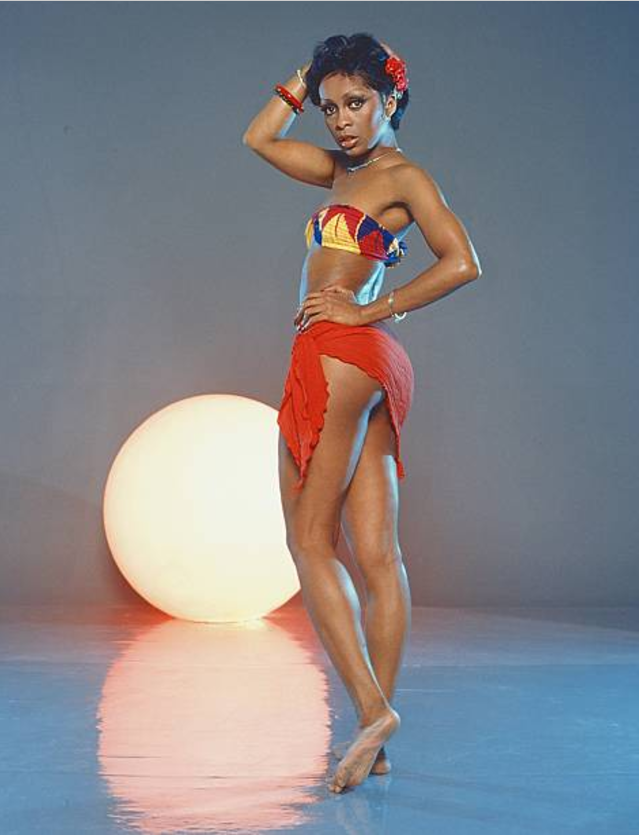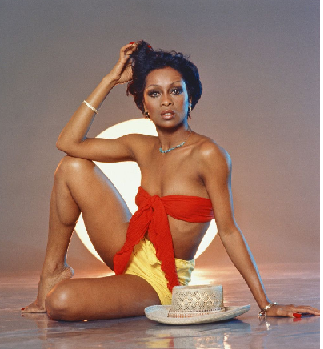

When the singer-dancer-actress Lola Falana arrived in New York in the early Sixties with, by her account just US$26 in her pocket, she took whatever dancing jobs she could get, mostly in Harlem clubs. And it was in one such place that she was spotted by Sammy Davis Jnr. In quick succession she appeared in his Broadway musical Golden Boy, recorded her debut single My Baby, appeared in Davis’ movie A Man Called Adam then was in a series of films in Italy .
Born in Camden, New Jersey, Falana was the third of six children. Falana’s father, an Afro-Cuban, left his homeland of Cuba to serve in the U.S. Marine Corps, later becoming a welder shortly after meeting Falana’s mother who was African-American.. By the age of three Falana was dancing, and by age five she was singing in the church choir. By the time she was in junior high school, Falana was already dancing in nightclubs to which she was escorted by her mother. Pursuing a musical career became so important to her that, against her parents’ wishes, Falana dropped out of Germantown High School a few months before graduation and moved to New York City.
Hers was a meteoric rise and she admits her friends were amazed by the rapidity of her career. As she said later, ‘Some of us singer are better than her, dance better than her, so what is it?”
She said the answer was simple, “It’s God”.
A child of the church in Philadelphia, she had dance lessons from the age of three, sang in the gospel choirs and at 17 ran off to New York.
When Davis split with his wife May Britt, Falana became his partner for a while, although when Davis rented a suite for her at the Playboy Club in London she invited a friend Altovise Gore to share the place . . . and Gore became Davis’ third wife.
Davis was enormously supportive of Falana and there is a striking image of her in his book Photo by Sammy Davis Jnr. Although Lola Falana was just a slight variant on her given name Loletha Falana she would sometimes say she chose the name because she wanted something which reflected the black experience and African culture.
“In Swahili it means . . . Debbie,” she laughed on her ’76 television special.
Joey Bishop had her as a regular guest on his television show in the late Sixties and Johnny Carson also was quick to get her onto The Tonight Show where she would sing soul and gospel-inspired songs. She told him that distinctive though her name was people would call her all kinds of variants, like Lollapalooza.
She was a star who posed for Playboy, did advertisements and photo shoots, danced and sang, recorded, made movies . . .
She was nominated for a Tony, and by the late Seventies was considered the Queen of Las Vegas where her glamorous, sophisticated show pulled in people by the thousand. And she was increasingly unhappy.
By the mid Seventies (when she was married to one of the brothers in the soul-funk/disco band Tavares) her profile was at his highest . She had Muhammad Ali on that ’76 television special where she delivers a sexy Lady Marmalade wearing very little . . . but she felt depressed and empty, and fell back on her faith.
She had always had doubts about her abilities (“I wasn’t the best ballet or tap dancer, I just needed to make money”) and said she never sought fame, the doors just opened.
But later in life she said she was in no doubt who had made it all happen: God had given her “a little biddy talent” and He was helping her make the most of it.
Her turning point came in the Eighties when she suffered from multiple sclerosis which left her partially paralysed. She prayed, became a Catholic and was outspoken on abortion, recording the pro-life single Don’t Cry Mary. And when she recovered she gave much of her life over to charitable and religious work.
Yet in her time – more than a decade from the mid Sixties – she broke down stereotypes, commanded the entertainment world across many platforms from stage shows to film, and was a powerful (and funny) role model for many young black women.
Source: Elsewhere
